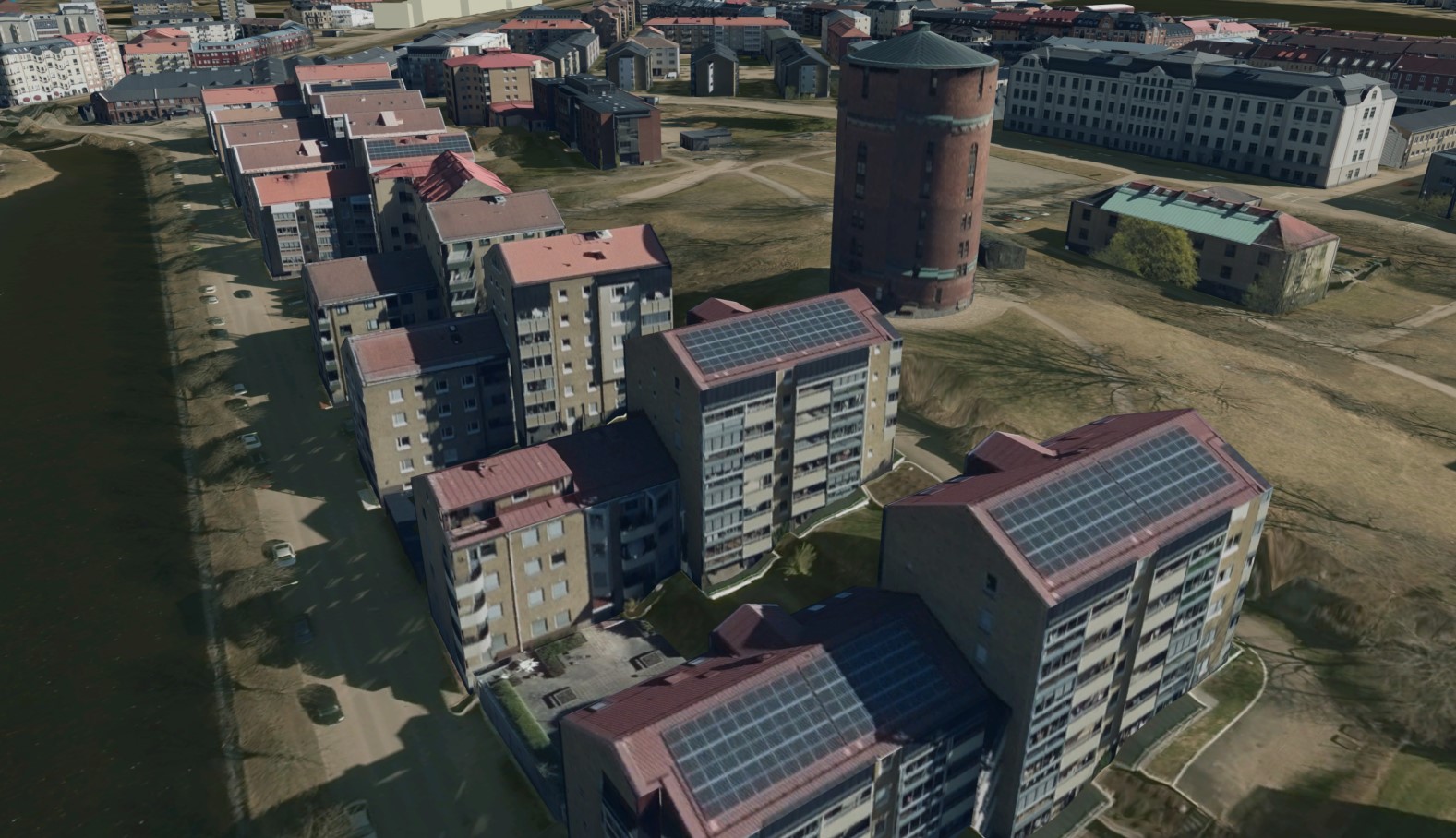Open-source models for holistic building energy system design at scale
Buildings and cities are becoming increasingly integrated into the energy supply system, creating a need for transparent, trustworthy, and holistic information for potential prosumers. This project is building the foundation for easy-to-access and automate building energy models to support distributed decision making and the energy transition.

Background
The need to improve energy efficiency and manage supply in buildings and cities is a core aspect of many climate change mitigation and sustainability scenarios. Demand for prosumer technologies, such as solar photovoltaics (PV), batteries, and electric vehicles (EV), is growing rapidly. At the same time, electrified heating already places a large demand on the electricity grid, therefore guiding a diverse set of citizens towards the best technical, economic, and social solution for the energy system is a challenge.
There is a long history of research in urban building energy models (UBEM) and several closed- and open-source software packages have been developed. These tools are typically used by researchers, city planners and policymakers, whereas the ones actually taking decisions – the building owners – typically get their information through commercial channels where biases and information asymmetry can create sub-optimal outcomes.
Solar maps are a good example of a public facing information source, where users can see the potential of their roofs for solar PV generation without needing to go through a salesperson. The utility of solar maps was boosted by our recently concluded project, where the tools provide an analysis and specific recommendation with the same detail as a solar installer. Advances in data collection, geographic information systems, and machine learning make this possible, and this project aims to bring this same functionality to all aspects of building energy systems in support of prosumers contributing to the energy transition.
Aim and objectives
This project aims to democratize energy system design and empower building owners with trustworthy information for holistic analysis of sustainable technologies.
- Identify the minimum viable dataset required to adopt and apply the proposed models
- Build an integrated prosumer energy systems model which can automatically design and recommend a holistic solution considering demand and supply
- Create an open-source code base that can be easily transferred to any municipality in Sweden
Project partners
rebase.energy, AIT Austrian Institute of Technology, Karlstads Energi, Karlstad Kommun
Funding is provided by the Swedish Energy Agency’s E2B2 program (project number P2022-00903).
Timeframe: January 2023 – December 2024
Outcomes
There are two open-source repositories under active development as part of this project, targeting energy data scientists and modelers as the target user group. The first is called EnergyDataModel , and it provides a Python-based data model that helps to write more modular and readable code. The second is called enerflow , and is a Python framework inspired by OpenAI’s Gymnasium that helps in writing modular and reproducible energy models that solves sequential decision problems.
Publications
Lundholm, S. (2023) Techno-economic analysis of solar and battery systems. KTH M.Sc. Thesis.
Data Protection
This project is guided by the EU General Data Protection Regulation (GDPR) .
Public and private data associated with individual households will be used during the course of this project, and includes;
- The full database of energy performance certificates (energideklaration in Swedish), as of July 2023, acquired from Boverket. This data can be traced back to individual households, but is also part of the public domain .
- Anonymized historical electricity and heat meter data, with hourly time resolution, from hundreds of residential buildings within Karlstad Energi’s customer base. This data is not associated with and cannot be traced back to individual households.
- 3D building geometry from Karlstads kommun, which is already in the public domain .
This data will be used in novel simulation methods, as either inputs or to validate outputs, used to predict the hourly energy demand of any real residential building at a city-wide scale. The demand profiles generated during the project will be informed by the original data listed above, but will only be representative of what a typical demand profile can look like. At no point will any original data from any of the sources be published publicly or used for purposes outside the scope of the project.
The original data used by KTH and AIT researchers during the duration of the project will be deleted from their respective computers/servers within six months of the project’s completion (June 2025).
Individuals may voluntarily provide permission to associate their meter data with their household. It is their right to, at any time during the project, to withdraw their consent and have their data removed from the project dataset.
Contact details for the project responsible, Nelson Sommerfeldt, can be found at the bottom of the page. The KTH data protection officer can be contacted at dataskyddsombud@kth.se
